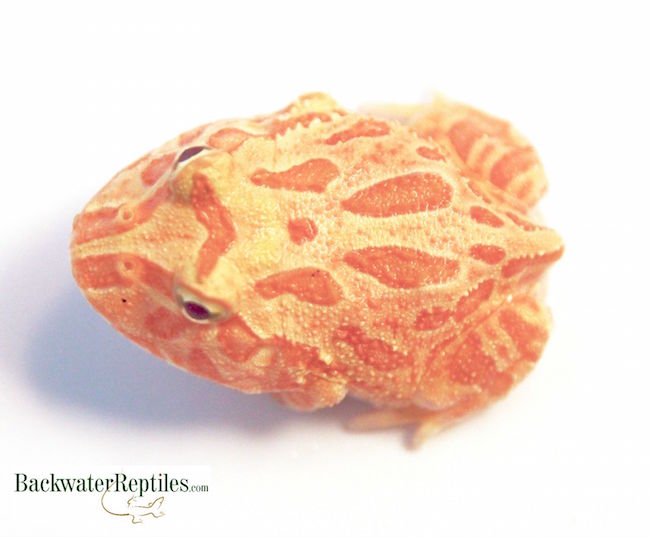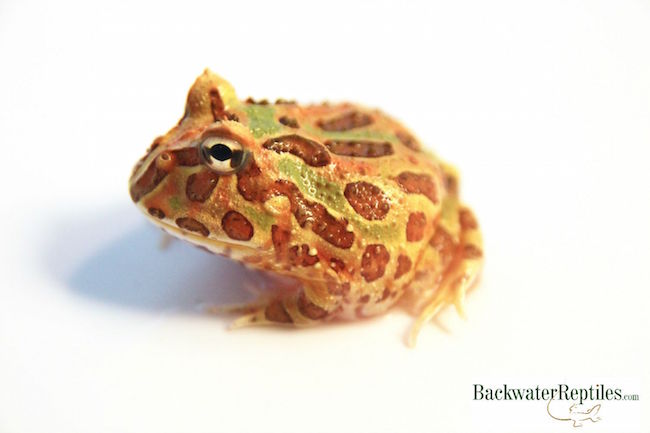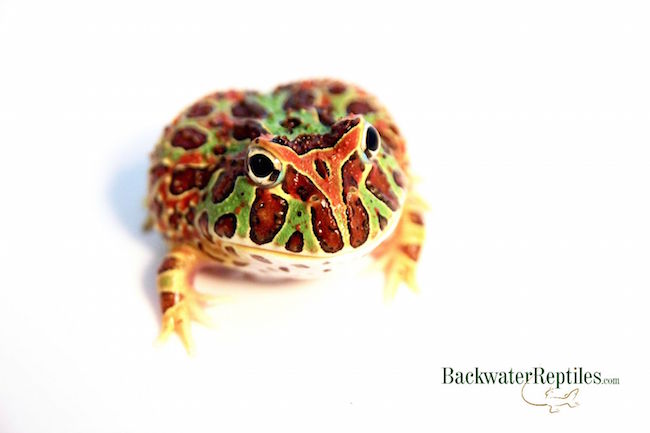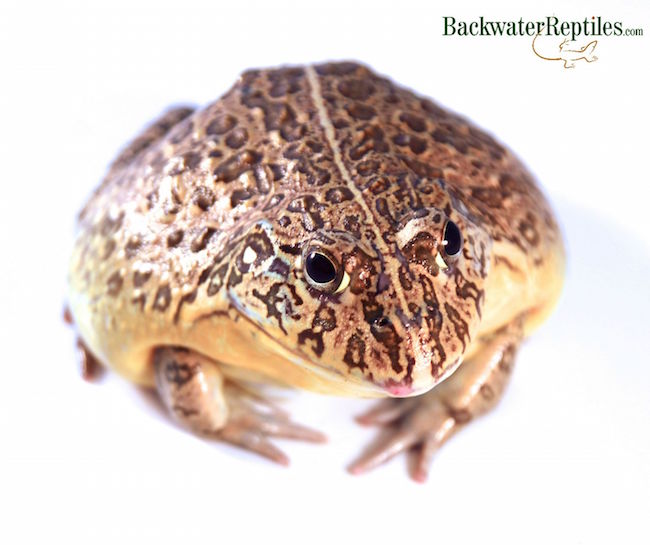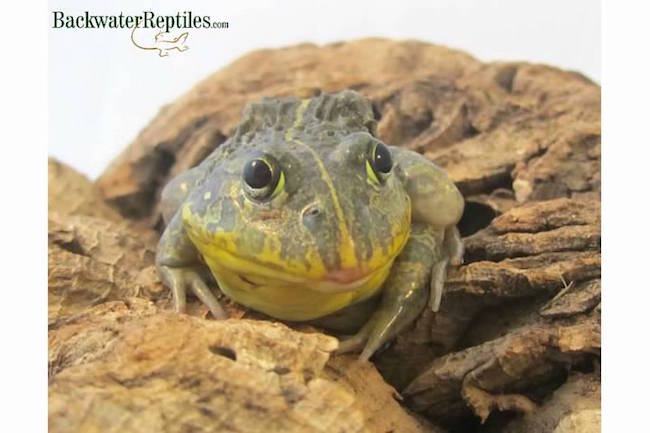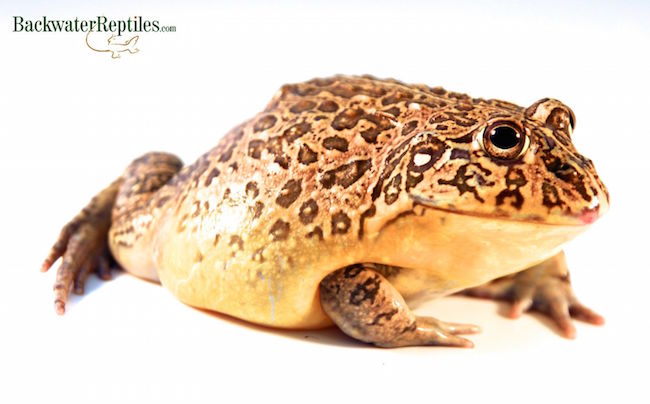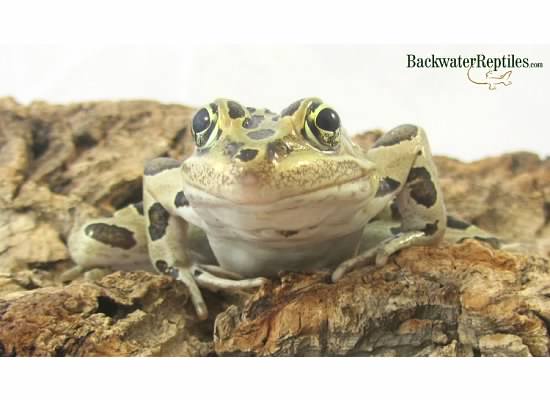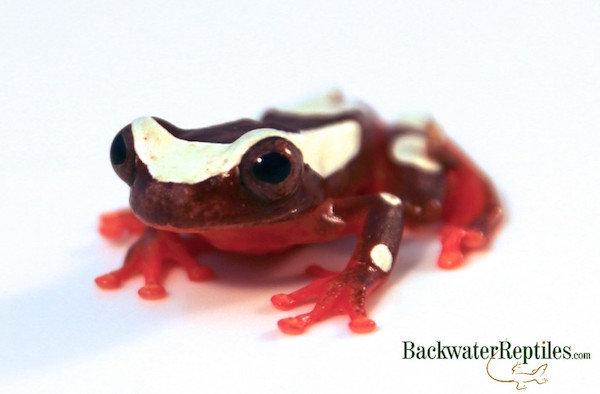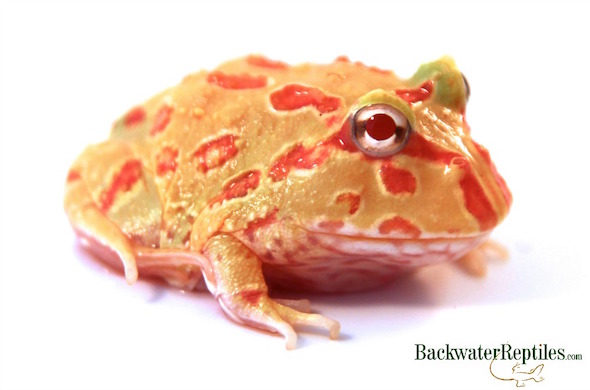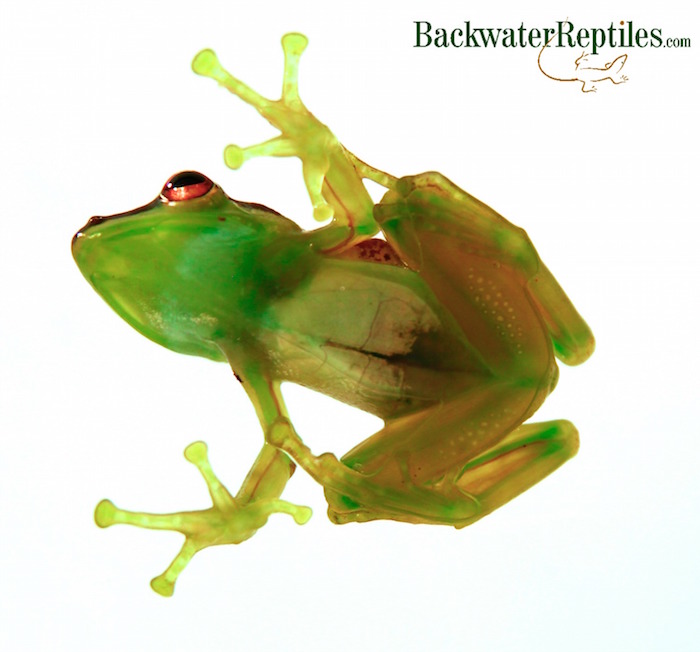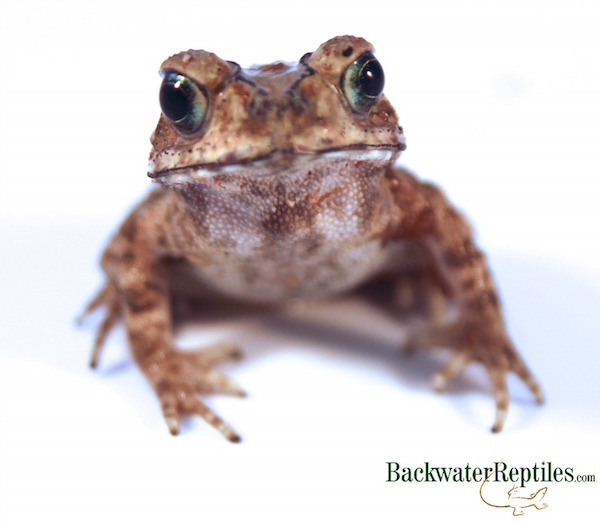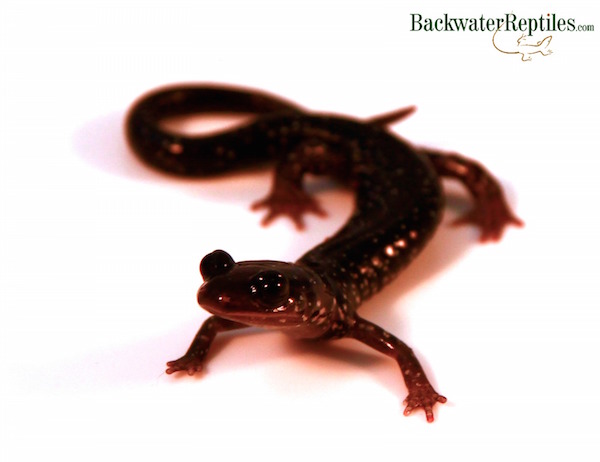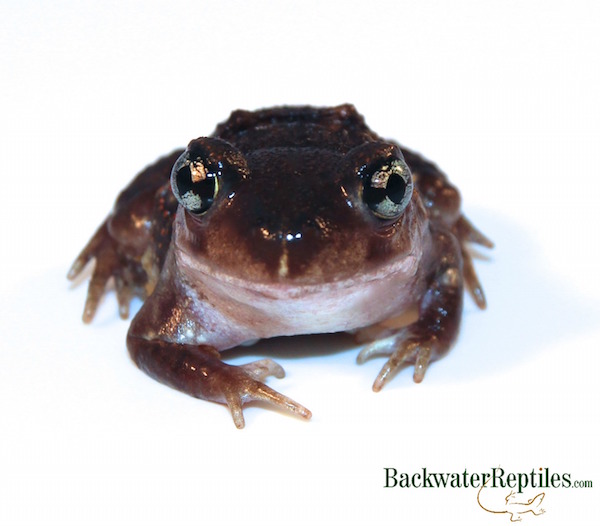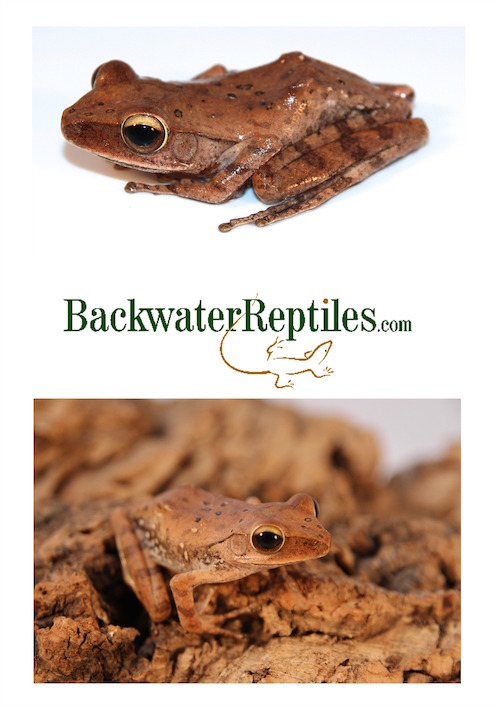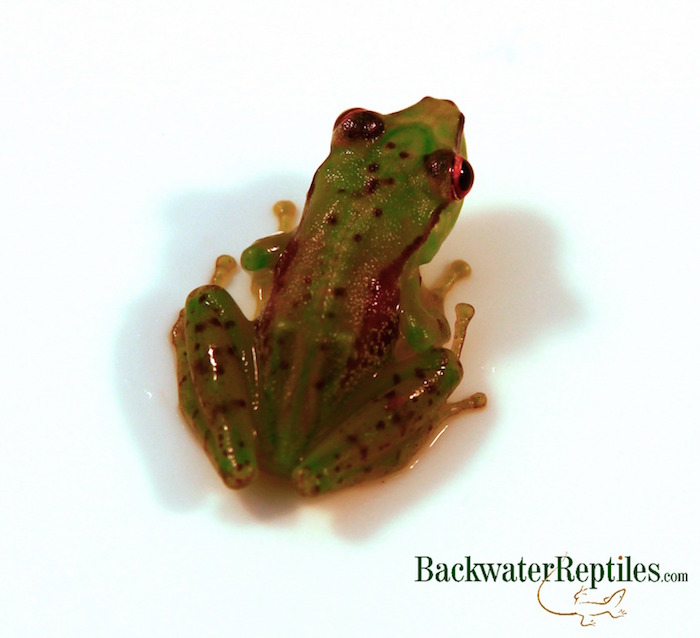Would you like to meet some of our Pacman frog morphs? Like many popular reptiles and amphibians, Pacman frogs have been bred to express a variety of different colors and designs, also called “morphs.” In this blog article, we’ll present to you the most popular and common morphs.
Green “Normal” Pacman Frog
As you probably surmised, the “normal,” “regular” or “green” Pacman is the standard coloration for these frogs in the pet industry. They are generally bright green with brown spots just like the one pictured.
But, did you know that in nature, their natural color is brown?
Proportionately, these hungry and hefty frogs start out small but grow to quite large sizes due to their voracious and seemingly unending appetites. They can reach the size of a softball in less than a year.

Strawberry Pineapple Albino Pacman Frog
The Strawberry Pineapple Albino morph is named after the colors of the fruits it resembles. Standard strawberry morph Pacmans have much more pink tones to their skin, but because this little frog is an albino, the colors are duller from lack of pigmentation.
Like most albino animals, this frog also has red eyes. Due to the lack of pigment, there are no other colors to hide the blood vessels, which ultimately makes the eye appear red. You’re seeing the blood inside the eyes.
Albino Pacman Frog
This morph is similar to the strawberry albino described above, but there is no pink tint to the frog. Instead, the lack of pigment creates a yellow and orange skin tone. The frog still possesses red eyes.
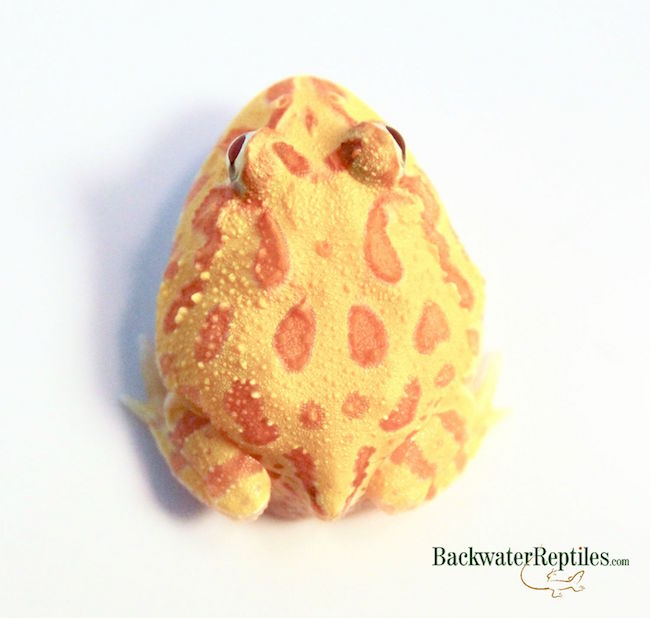
Notice the red eyes on this albino morph. This is a very popular frog, originally created by The Frog Ranch in 1992.
Chocolate Mint Pacman Frog
We’re a fan of naming animals after foods, which is why we like this morph. Just like the strawberry pineapple, this frog is named for the colors of the food it resembles.
Chocolate sounds so much better than brown, doesn’t it?
Mint chocolate Pacmans are a paler green color than the standard Pacman with lighter, less harsh brown accent spots.
High Red Ornate Pacman Frog
All the Pacman frogs are in the same family of Horned Frogs (Ceratophryidae), but the High Red Ornate Pacman is actually a Ceratophrys ornata and not a Ceratophrys cranwelli like all its cousins described above.
If you noticed this morph’s coloration is very vibrant, that would explain where the morph gets the “high” title. Any reptile or amphibian morph with “high” in the name basically just means “super” or “a lot.”
So this particular morph is named high red ornate because it’s skin is a very vibrant and noticeable red. They are really stunning animals.
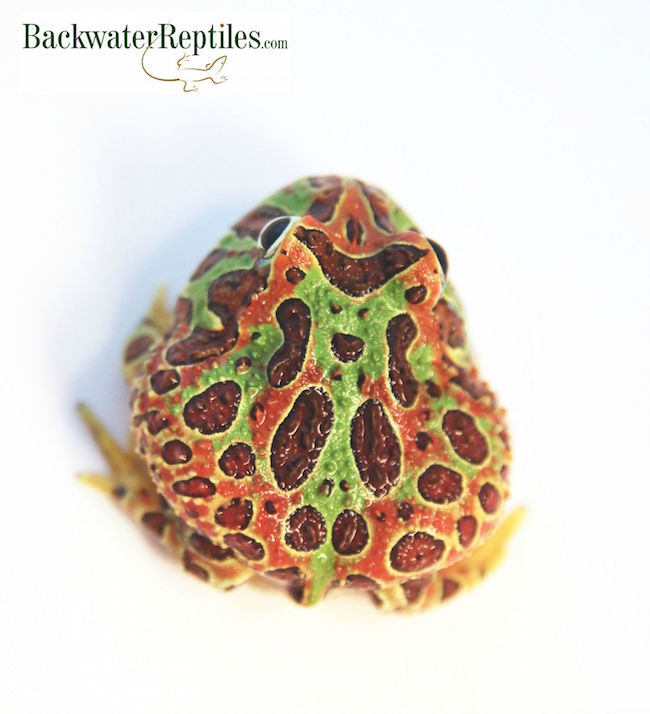
Summary
All of these Pacman Frog morphs are in the same family of horned frogs. The various morphs just reflect what captive breeding them has produced. Not only are the animals healthier, but they are uniquely colored.

Backwater Reptiles currently offers a variety of Pacman frog morphs for sale, all of which are captive bred.
Don’t miss the most in-depth, detailed Pacman frog care sheet on the internet, written by the owner of The Frog Ranch.
What’s your favorite Pacman Frog morph?




